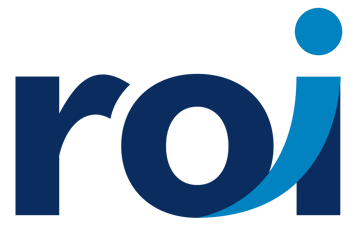The Bridge to IT Project Success
I Started as a Drop in the Bucket: Cerner Analyst
During a recent Cerner implementation project at a prominent health system, I knew that I wanted to stand out and make a positive impact at this client. A lot was at stake and the clock was ticking towards the pre-defined Go-Live date. However, it was unclear how my Analyst skills and approach would fit within the large team of Cerner Consultants. How would we all work harmoniously together and avoid stepping on each other’s toes? Yes, I had completed the Cerner Revenue Cycle certification and had been a technical resource & PM for many projects over the years, but it wasn’t about me. It was about my client. How could I help them shine, amidst the many problematic implementations in our industry?
What’s Missing from Most Implementation Teams
After the first few weeks, I was able to name key members of the project team:
- The health system provided the governance, internal project management, end-users, and support resources – they knew the internal environment, the requirements, and the project goals.
- Cerner provided the implementation team – they knew the technology, the contractual commitments, and how it had served other health systems.
For those who are uncertain about my view on this, let’s overlay the concept of this role into a few aspects of a System Implementation project, such as EHR or ERP Technology, to see how they could add value within your next project:
- When a project risk arises, a CVL can assess the situation and business impact from both perspectives, and work to mitigate them quickly.
- When the system build activities are being completed, the early assumptions of what the system can do can be discussed and the technology capabilities can be restated. It’s important for the vendor to clearly articulate the system benefits and limitations. It’s equally critical for the health system team to identify must haves vs. nice to haves for the initial implementation.
- When testing is underway, the CVL validates the quality of testing scripts and outcomes. Building good regression testing documentation and scripts will be important for the initial and follow-on phases of the project, through the lens of a non-biased resource.
- It is typical for Consultants to roll on and off of a project, based on their assigned work. Having a CVL involved from the beginning to the end of the project creates continuity and reduces the risk of items getting lost in translation or just forgotten.
A Job Description: Client-Vendor Liaison
The #1 attribute of the Client-Vendor Liaison is the ability to earn trust through integrity and consistency. No matter how many trends come into fruition in the ever-evolving world of healthcare IT, human connection and trust can never be replaced. Very similar to the makeup of an iceberg whose mass is mostly beneath the water, a trustworthy CVL will lead and make decisions from a place of deep character This person must focus on understanding and empathizing with the fears, goals, and vision of success of each key stakeholder (within both the health system and the vendor team). This doesn’t just apply to Cerner projects – it spans across any technology.
In addition to trust, here is a list of qualities that must exist for a Client-Vendor Liaison to be successful:
- Diligent about conducting root cause analysis and driving resolution
- Understands the big picture goals of each organization
- Inquisitive and curious about background and historical factors at play
- Understands the system limitations and how to reimagine success mid-project
- When working with different personality types, they play chess and not checkers because they understand the nuances, as well as the strengths and weaknesses of each team member
- Able to say they don't know and find the resources who have the answer
- Look for and close as many gaps as possible – as a master of getting “unstuck”
- Acts more like a coach who is able to help the team focus on solutions and less like an umpire who just wants to call balls and strikes
- Avoids being the “go-to person” or “know it all” – engages key stakeholders from client and vendor organizations in important discussions, guiding diplomatic and productive discussions
- Takes ownership of successes and failures equally – integrity is built with honesty, humility, and vulnerability
Real-World Value
While a job description may get you started recruiting and vetting your CVL resource, I want to share a few real experiences through the lens of my role and those who I supported on a project.
- Repeated mistakes with no accountability. This large team involved the planned turnover of Consultants based on their assignments. Since I was involved from day one, I could identify trends with a specific Consultant that led to the same mistake being made over and over. Initiating a non-threatening discussion led to awareness, accountability, and the prevention of future issues.
- Simple training gap created significant risk for the financial executive: No training had ever been conducted for the customer’s financial executive on Cerner’s Lights On reporting functionality. Approaching Go-Live, this key stakeholder had never heard of the basic reporting functionality that every healthcare executive needs within Cerner, providing such key metrics as: cash on hand, accounts receivable, claims, denials, DNFB days, etc.
- As an intentional CVL, it was important for me to tailor my approach and communication style to appeal to different personality types. I had to learn how to understand each team member, their assigned role, and their personalities, in order to communicate with them successfully. My role was not to point fingers, but to be the glue to strengthen Cerner’s relationship with the health system.
How to Find Your Client-Vendor Liaison
If your next technology project has a lot at stake, I highly recommend you securing a Client-Vendor Liaison to represent all organizations involved, bridging the communication gap, and helping to drive success with trust, integrity, and humility. This may be your missing piece.
For the past 20+ years, ROI Healthcare Solutions has earned the trust of health systems by serving as the hybrid partner that can represent the functional and technical perspectives equally. If you want to learn how we can support your next initiative, reach out at https://roihs.com/contact-us

